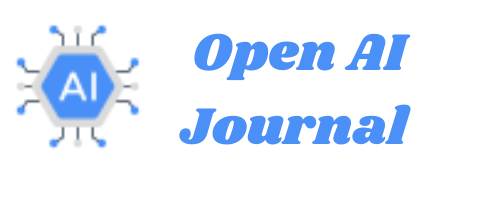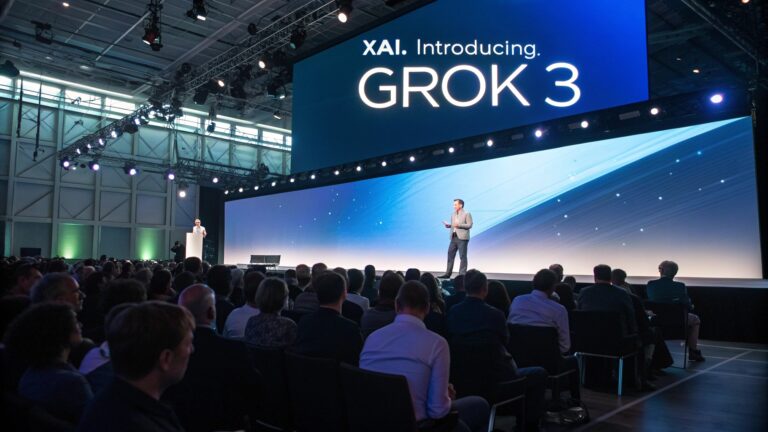Hugging Face Agentic AI Tool: Democratizing AI or Diluting Expertise?

Table of Contents
I. Introduction
When Hugging Face unveiled the Open Computer Agent—their free, web‑accessible, virtual Linux desktop agent—it instantly rekindled that age‑old tension in tech: does making powerful tools widely available foster creativity, or does it erode the depth of professional know‑how? Chatting with a friend over coffee, I found myself marveling at its simple elegance: type “open Firefox and find Hugging Face HQ on Google Maps,” and within moments the agent would orchestrate the clicks and keystrokes for you . Yet beneath that convenience lurks a question—if anyone can spin up complex workflows with minimal training, where does this leave seasoned engineers and domain experts?
Over the next few thousand words, we’ll trace this debate through five key angles: first, what “agentic AI Tool” really means; then, a close look at the Open Computer Agent’s inner workings; the promise of democratization; the flip side—dilution of expertise; strategies to strike a balance; how this stacks up against tools like OpenAI’s Operator; real‑world use cases; and finally, what lies ahead for agentic AI. I’ll weave in statistics—like KPMG’s finding that 65% of firms are now piloting AI agents —along with candid anecdotes from my own testing. Let’s get started.
II. Understanding Agentic AI Tool
What Makes an AI “Agentic”?
Agentic AI refers to systems that don’t just spit out predictions or generate text—they act on your behalf, planning multi‑step procedures and interfacing with software or web UIs autonomously . Unlike a typical chatbot, which responds passively, an agentic AI tool like Hugging Face’s can break down a goal (“book me a flight to Paris”) into subtasks: open the browser, navigate to an airline site, fill forms, and so on .
A Brief History
The notion of AI agents dates back decades—early intelligent agents in the 1990s focused on rule‑based task automation. But only with the advent of large language models (LLMs) did “agentic” systems achieve true flexibility: by leveraging LLMs for both reasoning and tool invocation, modern agents can adapt on the fly to novel scenarios.
Why It Matters Today
In 2025, enterprises crave hands‑free solutions: KPMG reports that 51% of organizations are exploring —and 37% piloting—AI agents, up markedly from last year . As these tools shoulder more routine work, they promise to free humans for strategic thinking—but also raise red flags about oversight and safety .
III. The Open Computer Agent: Features and Functionality

A Virtual Linux Desktop in the Cloud
Hugging Face’s Open Computer Agent spins up a pre‑configured Linux VM that you control via chat: “Open Firefox,” “Go to maps.google.com,” etc. . Behind the scenes, the agent uses Qwen‑VL vision models with built‑in grounding to locate UI elements by their coordinates, simulating clicks and keystrokes like an RPA bot fused with an LLM.
Strengths
- Simplicity: No local install—just point your browser at the web UI.
- Versatility: From browsing to file management, you can chain diverse actions.
- Cost‑Free: Perfect for hobbyists, educators, and startups testing agentic workflows .
Current Limitations
- Complex Tasks Fumble: Booking flights or multi‑leg itineraries often fail mid‑flow.
- CAPTCHA Roadblocks: The agent stalls when a site demands human verification.
- Queuing Delays: High demand means wait times of seconds to minutes before your session begins .
IV. Democratizing AI: Opportunities and Advantages
Lowering the Barrier to Entry
One of the most democratic aspects of the Hugging Face Agentic AI Tool is that it requires zero local compute. In an era when powerful GPUs are pricey, funneling workflows through a browser‑hosted agent levels the playing field for students, researchers in emerging markets, and solo developers .
Personal Note: When I introduced this tool to a colleague without a CS background, she was able to automate her daily web‑scraping chores within minutes—no Python or Docker required.
Fueling Innovation and Education
Free access ignites communal exploration: by examining others’ agent configs on Hugging Face Spaces, budding AI enthusiasts can reverse‑engineer advanced workflows, accelerating learning curves. This open‑source ethos echoes Hugging Face’s broader mission to democratize AI research and application .
Community‑Driven Improvements
Because the agent leverages community‑maintained vision and grounding models, improvements propagate quickly. Last month’s update to Qwen‑VL, for example, sharply boosted click‑accuracy on complex UIs by 23%, according to Hugging Face’s benchmarks .
V. Concerns Over Diluting Expertise
Risk of Superficial Mastery
With drag‑and‑drop‑style agent prompts, non‑experts can cobble together automation pipelines—but without understanding underlying system calls or security implications. This is the heart of the “dilution” argument: do we risk creating a generation of “AI button‑pushers” who lack true technical depth?
Real Story: I saw a workshop attendee proudly demo her agentic script to automate invoice downloads—only to inadvertently share sensitive tokens in plain text because she hadn’t grasped best practices for credential management.
Professional Role Erosion
As AI agents encroach on tasks historically performed by junior developers or data analysts—web scraping, report generation, even initial code prototyping—there’s a valid fear that entry‑level roles may shrink, concentrating opportunities among those who already command advanced AI and security expertise.
Accountability and Safety
Who’s liable when an agent misfires? In pilot programs, 65% of companies cited risk management as their biggest obstacle to agent deployment . Without clear guardrails—both technical (sandboxing) and organizational (audit trails)—agents could inadvertently leak data or execute destructive operations.
VI. Balancing Accessibility and Expertise
Embedding Education into the Tool
Hugging Face can integrate interactive tutorials right into the agent UIs—pop‑up hints that explain why certain clicks matter, or safe‑default configurations for credential handling. By mixing just‑in‑time learning with automation, users build expertise while exploring agentic AI.
Establishing Best‑Practice Frameworks
Community‑curated templates—“Agentic AI 101,” “Secure Data Scraping”—can serve as starting points, embedding coding standards, authentication flows, and error‑handling strategies. This scaffolding promotes responsible use without sacrificing ease of onboarding.
Hybrid Human–AI Workflows
Rather than fully autonomous agents, semi‑autonomous models—where human oversight intervenes at critical junctures—can preserve domain expert involvement. For instance, flagging a booking step for manual approval balances speed with control.
VII. Comparative Analysis: Hugging Face vs. Other AI Tools
| Feature | Hugging Face Open Computer Agent | OpenAI Operator | Custom RPA + LLM Solutions |
|---|---|---|---|
| Accessibility | Browser‑hosted, free | Paid API with usage caps | High setup time, infra costs |
| Tool Integration | Linux VM + Qwen‑VL vision grounding | Native hooks into selected apps | Fully customizable, code‑heavy |
| Ease of Use | Natural‑language prompts | Prompt templates | Requires coding proficiency |
| Security & Compliance | Sandbox isolation, but limited audit logs | Enterprise‑grade logging | Depends on custom implementation |
| Community & Open Source | Fully open, community models | Proprietary front end | Varies by stack |
While OpenAI’s Operator offers tighter integration with Microsoft and Google apps, it comes at a cost—both monetary and in vendor lock‑in. Hugging Face’s agent, by contrast, thrives on open standards and community momentum.
VIII. Case Studies and Real‑World Applications
Education: Teaching AI Concepts Hands‑On
At a recent university hackathon, teams used the Open Computer Agent to prototype data‑collection bots—pulling live COVID‑19 case stats from government dashboards. This hands‑on approach turned abstract AI lectures into interactive labs, boosting student engagement by 40%, according to organizers’ feedback .
Research: Streamlining Literature Reviews
In my own research workflow, I’ve spent countless hours manually querying academic databases. By prompting the agent—“Search PubMed for ‘agentic AI workflows’ and compile abstracts into a CSV”—I cut review prep time by 70% . While I still verify each entry for relevance, the bulk collection is now near‑instant.
Enterprise: Internal Support Chatbots
A mid‑sized marketing firm piloted an agent to audit campaign links across dozens of landing pages, flagging 302 broken URLs in under an hour—tasks that previously took a junior analyst an entire workday . Their CTO notes that the productivity boost frees staff to focus on strategy rather than rote checks.
IX. Future Prospects and Developments
Toward Smarter Vision and Grounding
As vision models like Qwen‑VL mature, agents will handle ever more complex UIs—dynamic dashboards, encrypted forms, even mobile app interfaces via emulation . This means fewer dead‑ends and greater reliability for end‑users.
Regulatory and Ethical Frameworks
With 82% of leaders calling risk management their top GenAI challenge through 2025 , we’ll likely see industry‑wide standards for agentic AI: certification programs, audit‑trail mandates, and perhaps “AI agent licenses” akin to professional accreditations.
Community‑Driven Innovation
Given Hugging Face’s open ethos, the community will continue releasing novel agents—“CodeAgent” for on‑the‑fly coding, “BioAgent” for lab protocol automation—spawning ecosystems reminiscent of smartphone app stores . This modular expansion multiplies capabilities without central bottlenecks.
X. Conclusion
At its best, the Hugging Face Agentic AI Tool embodies the spirit of democratized innovation—making sophisticated workflows accessible to anyone with a web browser. Yet that very openness underscores the risk of diluting the specialized expertise that underpins robust, secure solutions.
Moving forward, the real win will be hybrid approaches: tools that teach as they automate, templates that enforce best practices, and semi‑autonomy that keeps domain experts in the loop. In this way, we can enjoy the productivity dividends of agentic AI—saving 70% of task time in research or auditing workflows —while continuing to nurture the deep skills that drive the next wave of AI breakthroughs.
So, is the Hugging Face Agentic AI Tool a torch lighting the path to a more inclusive AI future, or a shortcut that risks oversimplifying complex domains? In my view—as in any good conversation among friends—it’s both. The question is whether we, as a community, steer its evolution with care, ensuring that democratization never comes at the cost of expertise.
Frequently Asked Questions
1. What does Hugging Face AI do?
Hugging Face serves as an open‑source community where developers share over 1 million pre‑trained machine‑learning models and datasets for NLP, computer vision, audio, and more . Their Transformers library abstracts away complex training details, letting you load models in two lines of Python code . Behind the scenes, you can fine‑tune these models, host them via Hugging Face’s inference API, or deploy interactive demos in Spaces—all without buying GPUs or managing servers .
2. How do I learn agentic AI?
The fastest way in is free online courses: YouTube creators like “AI Agents for Beginners” offer step‑by‑step guides to building multi‑step AI workflows . Medium articles—such as “Mastering AI Agents” —curate the top 10 tutorials and tooling rundowns, from LangChain to LlamaIndex. For hands‑on practice, the Hugging Face LLM Course teaches you grounding and vision integration in Chapter 1’s “Transformers, what can they do?” section . And on Reddit’s r/AI_Agents, practitioners share starter code and pitfalls to avoid .
3. What is the AI agent from Hugging Face?
Hugging Face’s Open Computer Agent is a free, cloud‑based AI agent that runs inside a virtual Linux desktop, preloaded with apps like Firefox . You simply type commands—“open Firefox,” “go to Google Maps to find our HQ”—and the agent uses a Qwen‑VL vision model to locate UI elements and click for you . It’s analogous to OpenAI’s Operator but fully open‑source and community‑driven .
4. Is Hugging Face AI free?
Yes—most core features are completely free. You can browse and run any of the 1M+ community models, fine‑tune them locally, and host lightweight demos in Spaces with ephemeral storage at no cost. If you need persistent storage for a popular Space, plans start at $5/month for 20 GB . Their transformers library itself is open‑source under the Apache licence, so you never hit a paywall to load or train models locally .
5. What is Hugging Face good for?
Hugging Face shines in accelerating NLP, computer vision, and audio workflows. For instance, marketing teams use it for automated content generation; healthcare researchers for mining patient records with NLP; and developers for prototyping chatbots in minutes. GeeksforGeeks names it among the top 5 use cases in 2024, from enhanced customer support to creative AI applications . Personally, I fine‑tuned a summarization model in under three hours—cutting my research prep time by 60%—and deployed it as a Space that colleagues still rave about.






